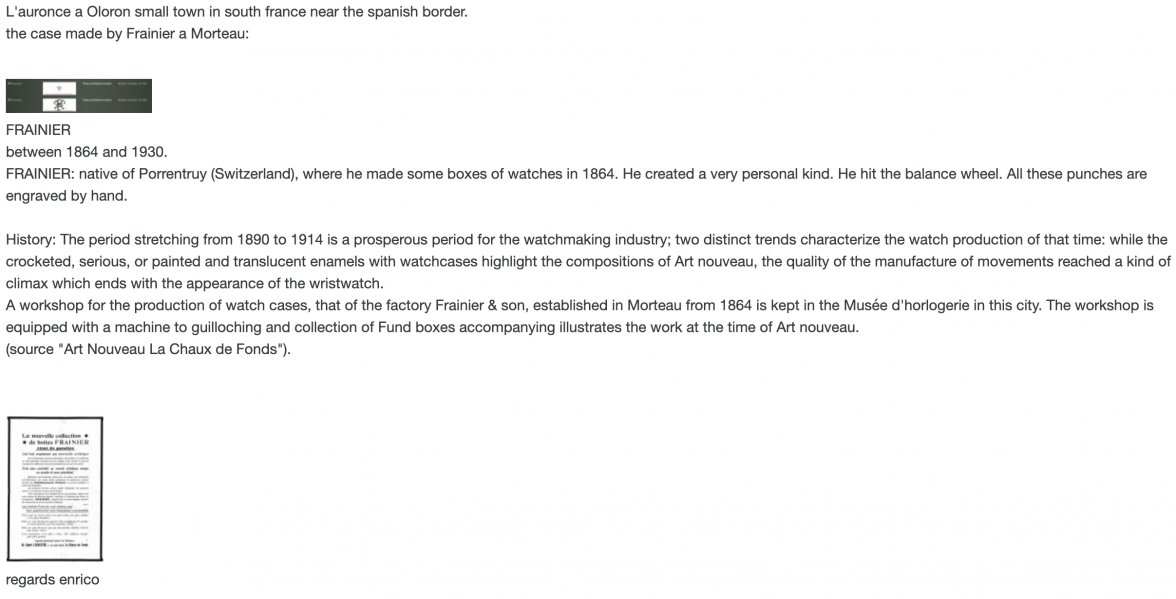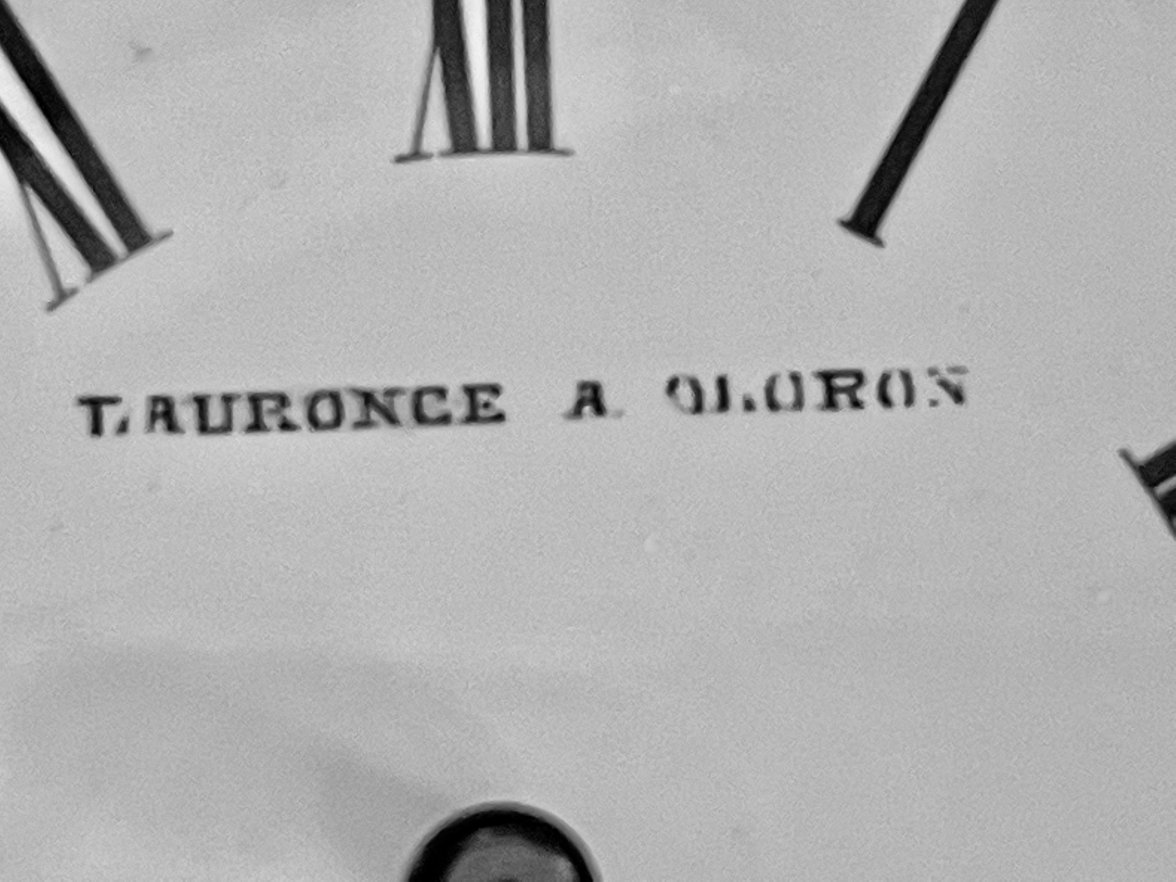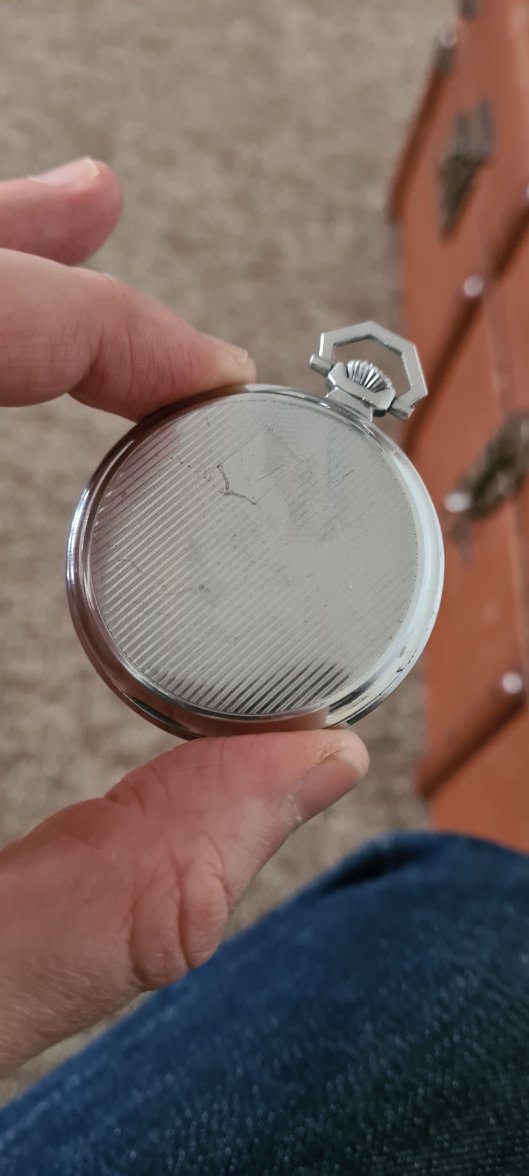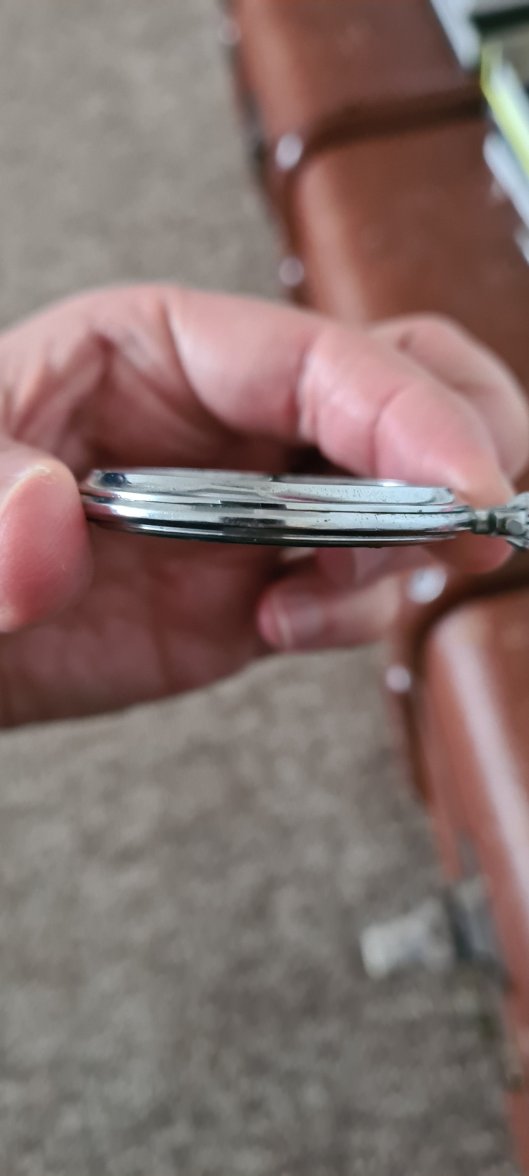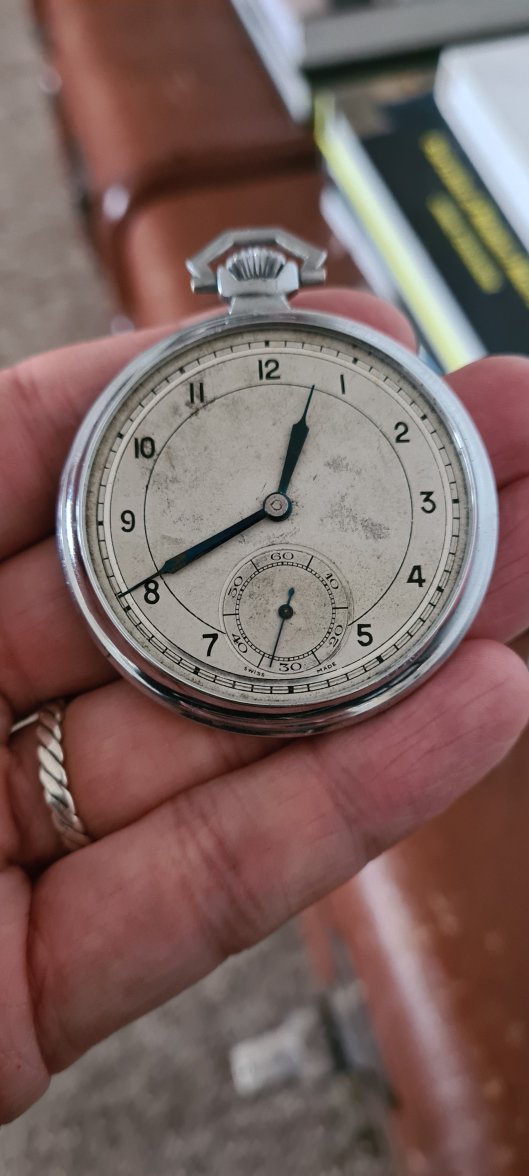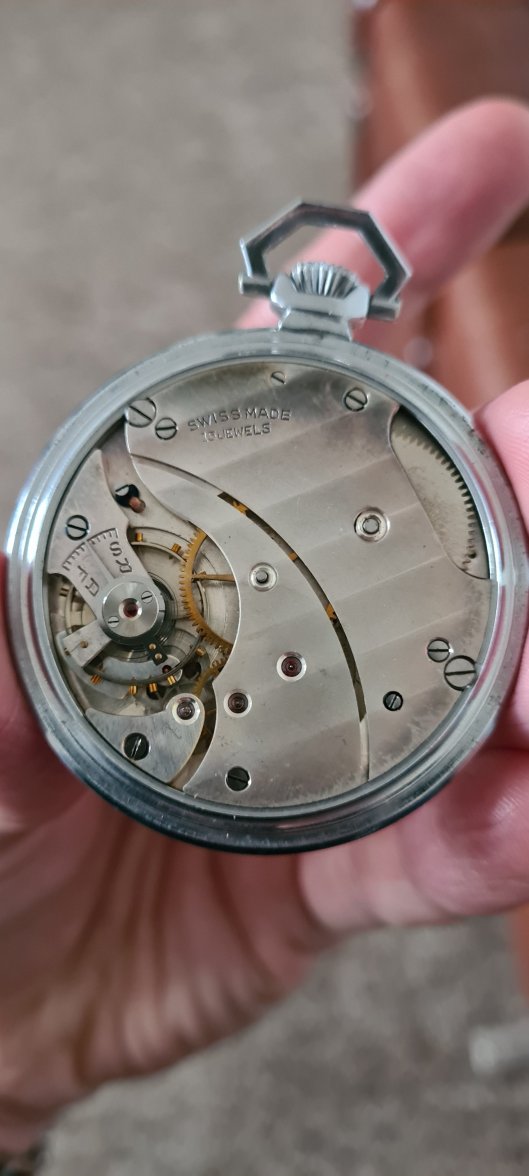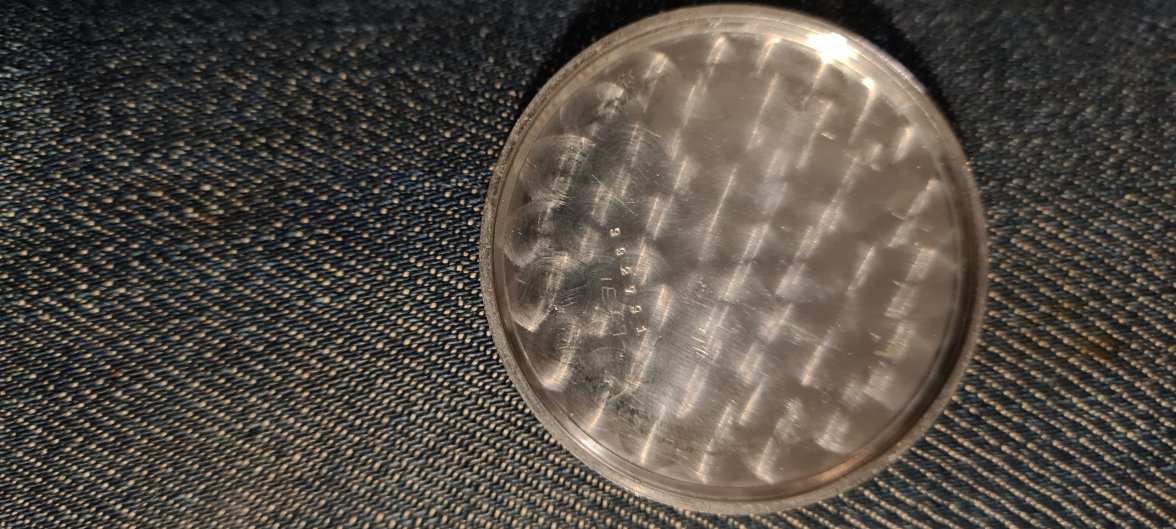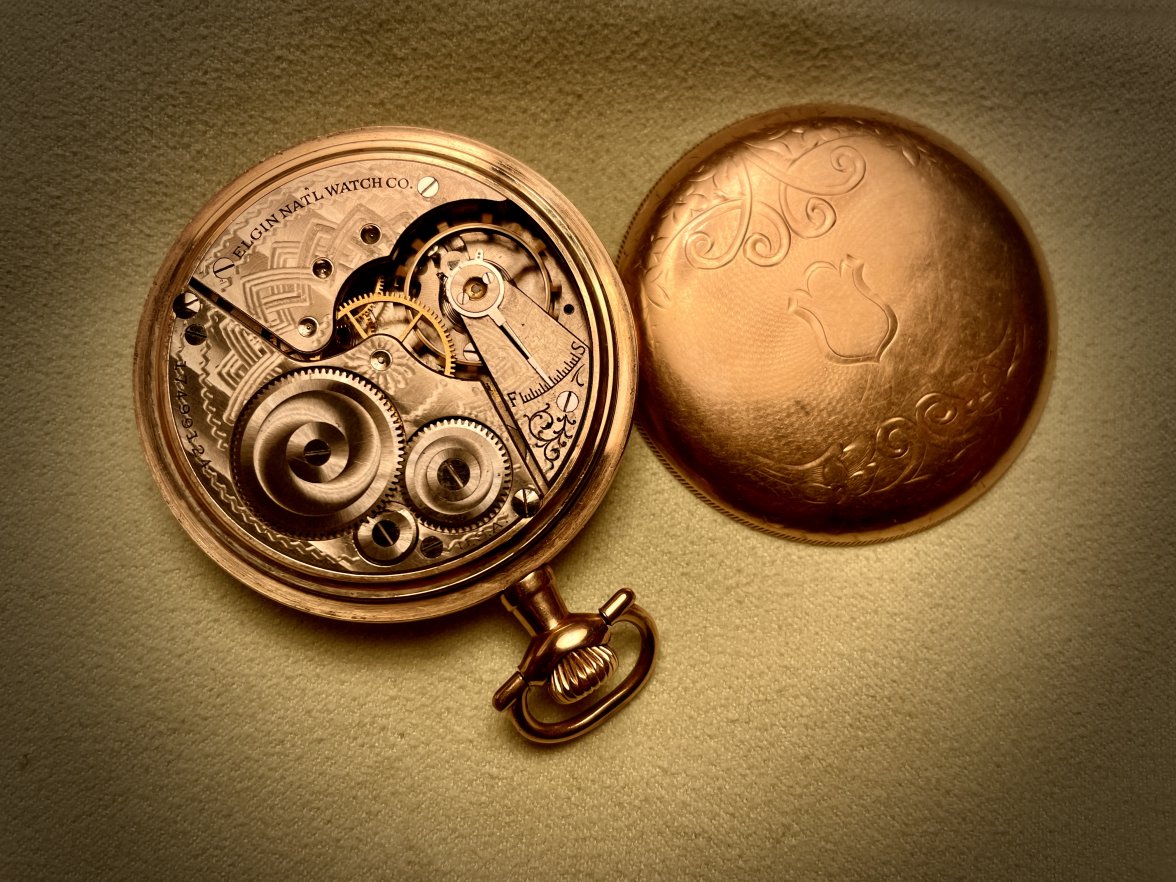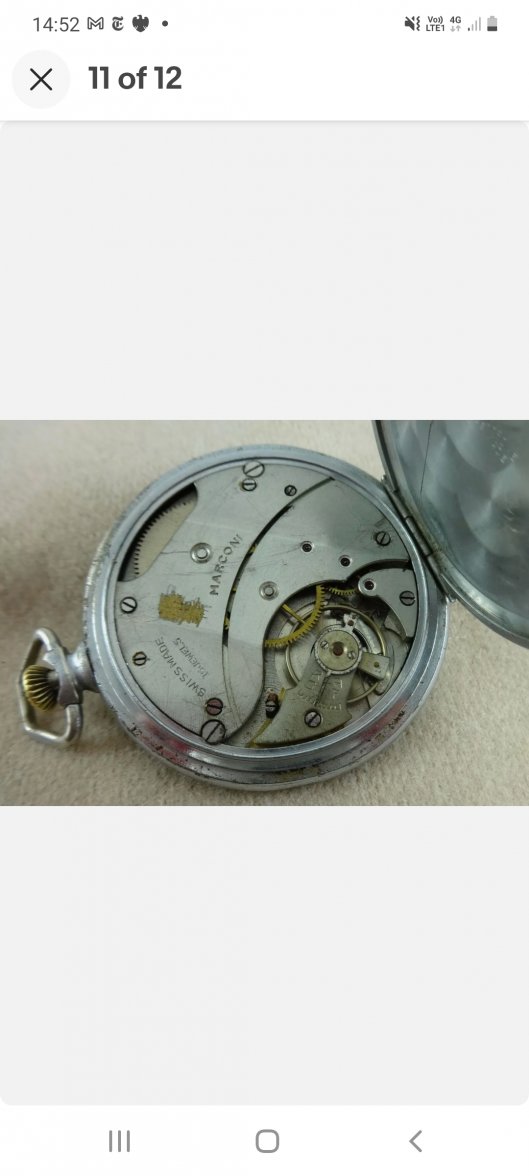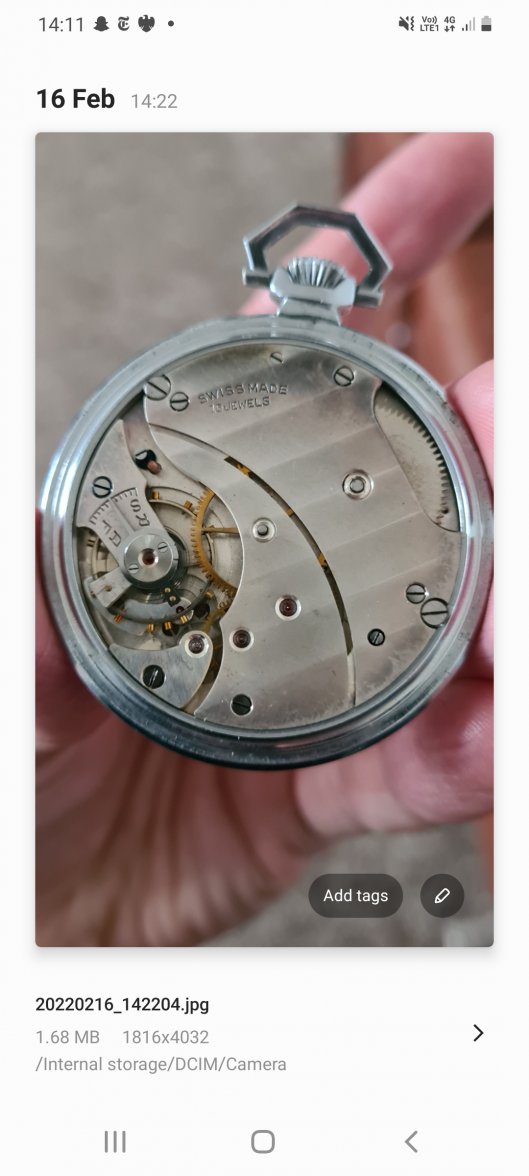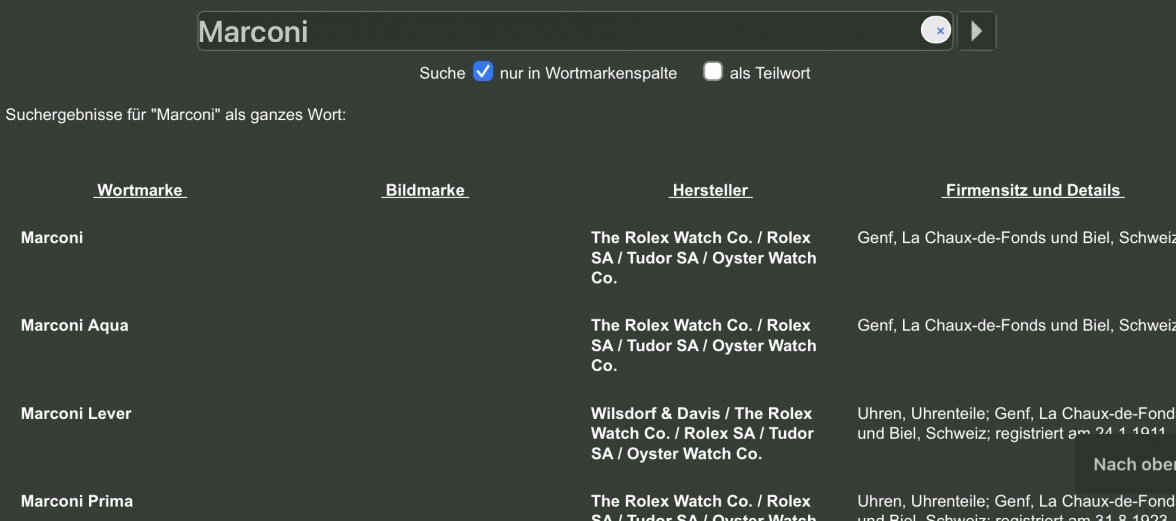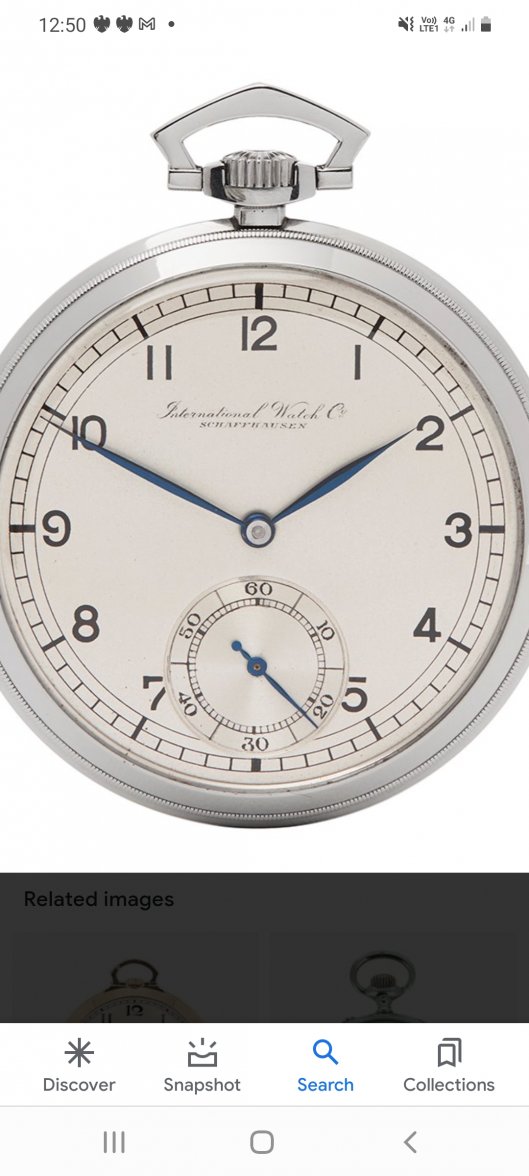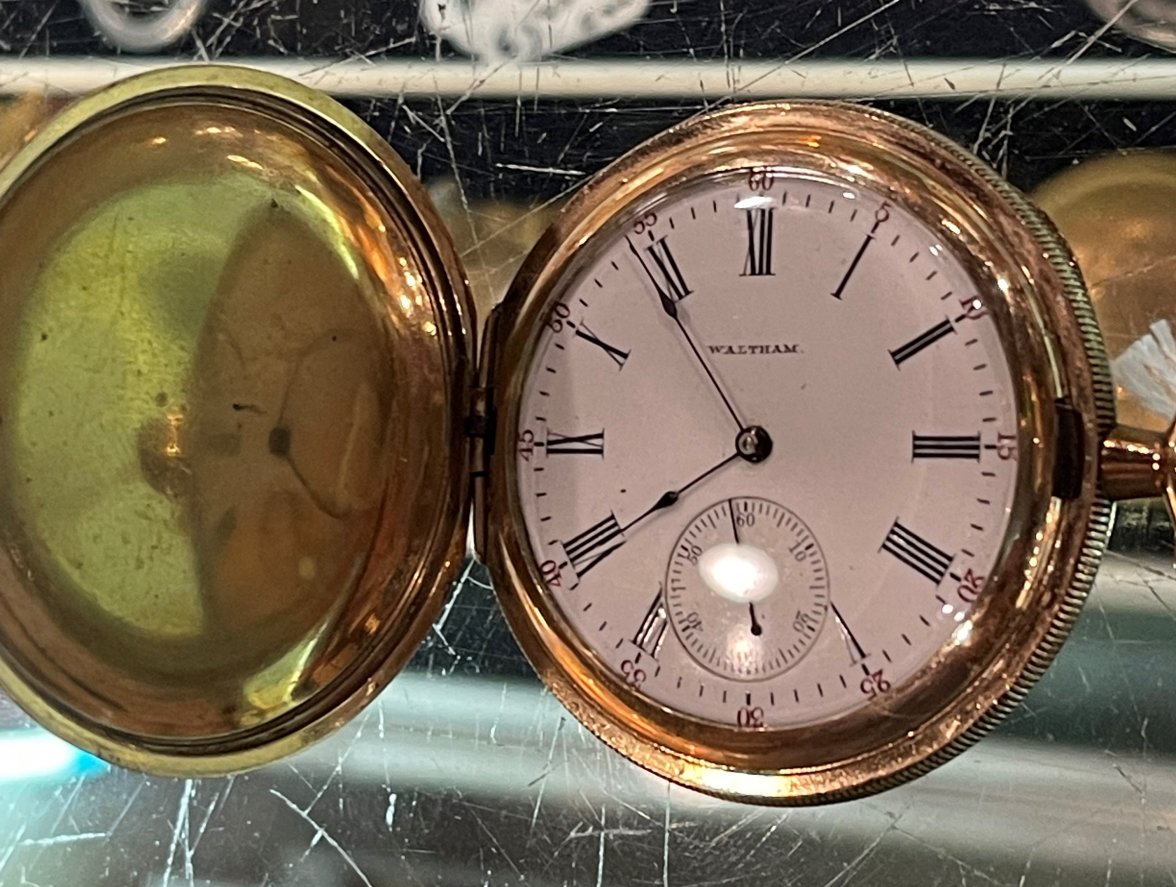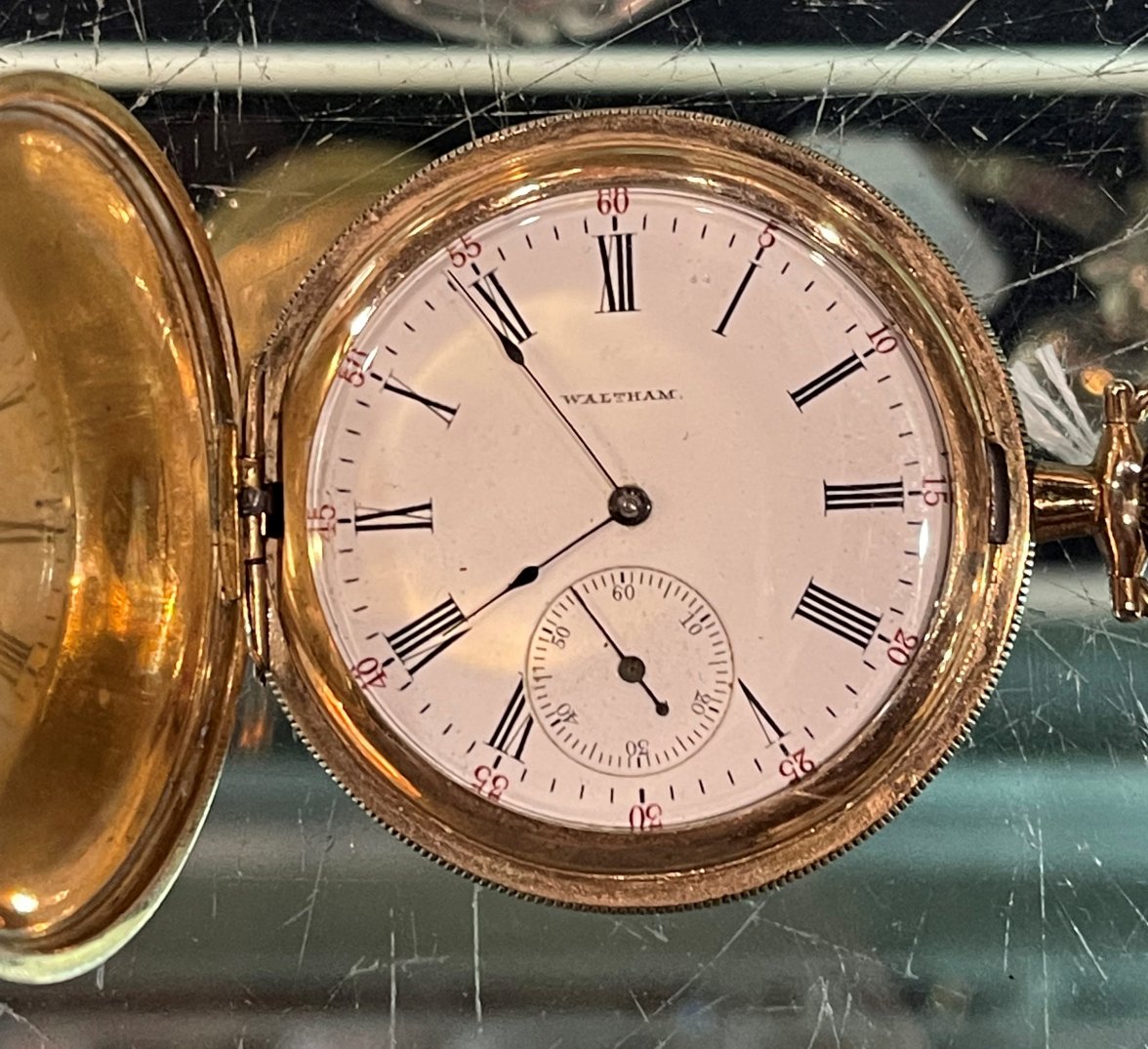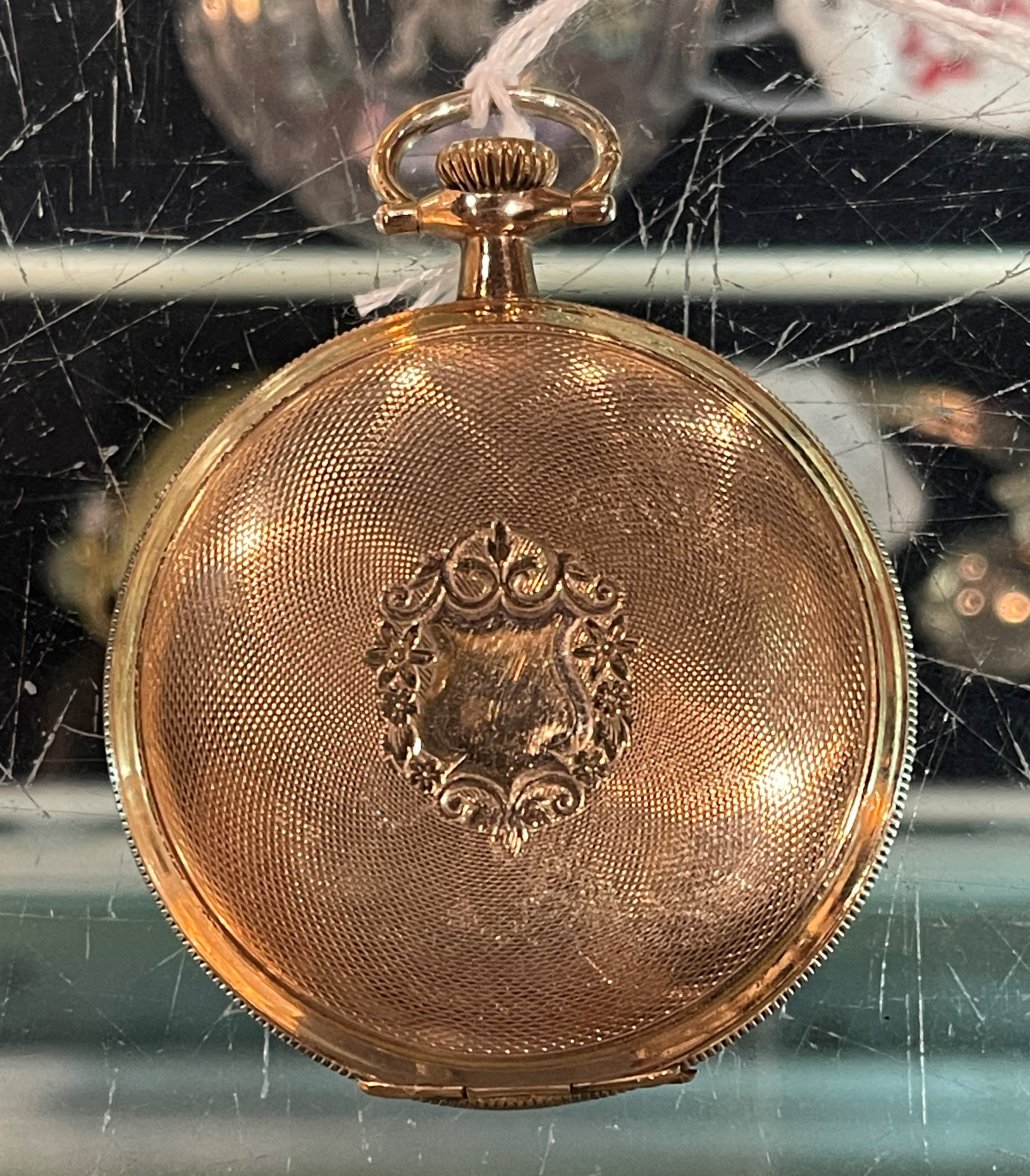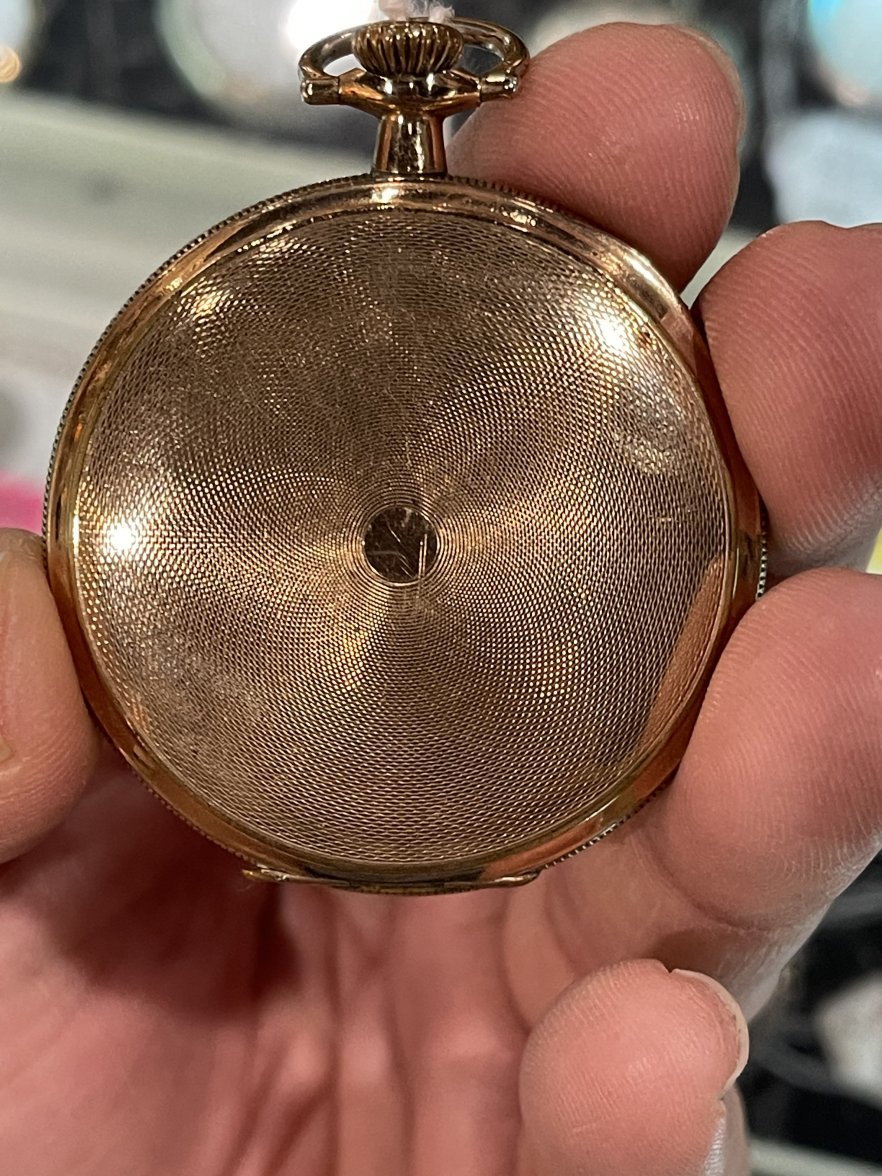Calling all Pocket Watch Buffs
Canuck
·That describes the case maker. As with so many names found on watches of the era that originated in Europe, information on the dial name may be impossible to find. I have run into watches from Europe that had vitreous enamel dials with enamel numerals, that had the maker’s or retailer’s name printed on the dial in India ink! Don’t ask how I found that out!
Danwales
·
I couldn't resist this little find in a charity shop earlier. A thin watch, blued hands and a sort of art deco look to the crown. I know nothing about pocket watches and I might never get it up an running but i quite like it. No name on dial or movement though. If anyone has any information on this I would be most grateful.
Canuck
·I couldn't resist this little find in a charity shop earlier. A thin watch, blued hands and a sort of art deco look to the crown. I know nothing about pocket watches and I might never get it up an running but i quite like it. No name on dial or movement though. If anyone has any information on this I would be most grateful.
You don’t show a picture of the inside of the case back, but there may well be a trade mark to be found there. It may be the case maker’s trade mark, but it could also be a watch brand name. Please let us know. The maker of the case and the maker of the mechanism will not be the same company. There may be a maker’s name of the mechanism (the movement), behind the dial. My guess is the watch is likely from the late 1920s or 1930s. I suspect the case may be either steel, or an alloy such as “Staybrite”, or nickel silver. The metal content in the case may also be marked inside the case back. It looks to have had little use, and provided you will derive pleasure out of using it, it looks like a good candidate for servicing.
Danwales
·Canuck
·If only manufacturers of watches in an era such as yours was from, had given some thought to the possibility of their product might still exist decades after they were made, and that thosewho collect them might have an interest in the pedigree of their product. It is my opinion that the Swiss were more inclined to produce generic, unidentifiable watches than any other country. The movement in your watch might still be identified as to the maker, but the maker’s name will not likely be one you would recognize as an actual identifiable brand name. People who only marketed watches, generally relied on other people who made watches for inventory. If we could see what there is to see behind the dial, there is a chance we might know more. Clearly, the case is not supplying any clues.
Danwales
·I agree and it's a shame. I had a real buzz of anticipation as I scurried home with it earlier. I couldn't wait to open it and see what it was. A nice little buzz you sometimes get from this hobby. I'm going to keep the watch and when funds permit ( could be 5 years, could be 10) I will get it up and running again. It's thin case gives it a tactile quality and I could see myself carrying this in an inside pocket of a suit jacket.
Thank-you for the reply @Canuck
Thank-you for the reply @Canuck
Alpha
··Kilt Owner, Beagle Parent, Omega CollectorCanuck
·Here’s what the pocketwatchdatabase.com says about @Alpha ’s neat Elgin.
https://pocketwatchdatabase.com/search/result/elgin/17499124
The case finish has stood up well over approx. 108 years. Made circa 1914, at a time a major shift away from pocket watches to wrist watches had begun. Lots of watches contemporary to this Elgin might have seen a few years use, then stuck in a sock drawer because the owner had changed to a wrist watch.
Production numbers indicate this is not a rare watch, but it appears to be in excellent condition. Elgin was the largest U S producer of quality jewelled watches. Originally named the National Watch Company. Owing to the many watch factories in the North East U S A, each of which had a unique name, popular usage amongst the population was to refer to these companies by their location, rather than the official name. Hence, the National Watch Co. (Elgin, Ill) became Elgin. The Springfield Watch Company (Springfield, Ill) became the Illinois Watch Co. And the American Watch Company (Waltham, Mass.), eventually became Waltham.
An excellent photograph, by the way.
https://pocketwatchdatabase.com/search/result/elgin/17499124
The case finish has stood up well over approx. 108 years. Made circa 1914, at a time a major shift away from pocket watches to wrist watches had begun. Lots of watches contemporary to this Elgin might have seen a few years use, then stuck in a sock drawer because the owner had changed to a wrist watch.
Production numbers indicate this is not a rare watch, but it appears to be in excellent condition. Elgin was the largest U S producer of quality jewelled watches. Originally named the National Watch Company. Owing to the many watch factories in the North East U S A, each of which had a unique name, popular usage amongst the population was to refer to these companies by their location, rather than the official name. Hence, the National Watch Co. (Elgin, Ill) became Elgin. The Springfield Watch Company (Springfield, Ill) became the Illinois Watch Co. And the American Watch Company (Waltham, Mass.), eventually became Waltham.
An excellent photograph, by the way.
Edited:
Danwales
·Canuck
·Danwales
·Mikrolisk indeed indicates that the Marconi name was copyrighted by Rolex. However, I doubt very much that the watch was actually made by Rolex. I would still like to see whether there are any clues on the movement, under the dial.
Somebody suggested it might have been made by Cortebert but I haven't seen a similar movement which is dissimilar to a lot of pocket watch movements in that much of the gubbins is covered by the plates.
Danwales
·Canuck
·I checked the Ranfft archive to see if there was anything made by Cortebert that looked similar. There was nothing even close.
noelekal
··Home For Wayward WatchesCanuck
·Those are often called a “dogged” case screw. When a pocket watch movement is fitted with these, it is often possible to remove the movement from the case without having to remove the case screws. Simply back the screw off sufficiently that the screw head will pass by the lip in the case as the movement is removed. I find these screws to generally be more of an annoyance rather than a convenience!
kip595
·Came across this one today at a local antique shop my girlfriend wanted to peruse (candelabras...why we need candelabras I dunno, but that's disirregardless, as a fella once so incorrectly said) - of course, I asked if they had any watches, of which the following seemed intriguing, but as I'm not a pocket watch guy, know nada about:
Unfortunately trying to take a few pics in a hurry this was the best I was able to get, particularly against the spidered plexi of the case under it. The tag read "Waltham Circa 1910-20; 'Royal', 17 jewel, Hunter Case"
The watch is a crown wind model and did start right up with a few twists and seemed to be running smoothly and in time with my P.O. for the 20 seconds or so I timed it - I'm sure it would need an oil and cleaning at the least. No hallmarks I could make out anywhere, which leads me to suspect GF rather than SG; the retainer clasp also snaps crisply closed which IIRC may suggest steel under the gold as well, given hos quickly the clasp can ear down gold for those who weren't careful with this design.
I had no way to measure but it was on the small side for a PW, perhaps 42-46mm w/o crown - between that, the case, the Roman dial vs. RR Arabic, and the obvious (but surprisingly unused) area for an initials monogram, it seemed very much to either be a smaller gent's dress piece or a surprisingly large ladies piece, perhaps meant for travel.
Can anyone clue me in on this little guy at all? I figure I'd be several hundred in by the time I get it fully up to spec, or close to, but the lack of wear on even the crystal or coin edging was surprising to me and got me interested.
P.S. My apologies for the lack of movement shots as this has a pry/pop-off dust cover and the shopkeep was understandably reticent to let me ease my old Case's blade in there, but his area is mainly furniture and paintings, so that may remain a mystery unless I decide to make an offer and insist - with a proper case knife of course, not my Case pocket folder!
Unfortunately trying to take a few pics in a hurry this was the best I was able to get, particularly against the spidered plexi of the case under it. The tag read "Waltham Circa 1910-20; 'Royal', 17 jewel, Hunter Case"
The watch is a crown wind model and did start right up with a few twists and seemed to be running smoothly and in time with my P.O. for the 20 seconds or so I timed it - I'm sure it would need an oil and cleaning at the least. No hallmarks I could make out anywhere, which leads me to suspect GF rather than SG; the retainer clasp also snaps crisply closed which IIRC may suggest steel under the gold as well, given hos quickly the clasp can ear down gold for those who weren't careful with this design.
I had no way to measure but it was on the small side for a PW, perhaps 42-46mm w/o crown - between that, the case, the Roman dial vs. RR Arabic, and the obvious (but surprisingly unused) area for an initials monogram, it seemed very much to either be a smaller gent's dress piece or a surprisingly large ladies piece, perhaps meant for travel.
Can anyone clue me in on this little guy at all? I figure I'd be several hundred in by the time I get it fully up to spec, or close to, but the lack of wear on even the crystal or coin edging was surprising to me and got me interested.
P.S. My apologies for the lack of movement shots as this has a pry/pop-off dust cover and the shopkeep was understandably reticent to let me ease my old Case's blade in there, but his area is mainly furniture and paintings, so that may remain a mystery unless I decide to make an offer and insist - with a proper case knife of course, not my Case pocket folder!
Canuck
·Came across this one today at a local antique shop my girlfriend wanted to peruse (candelabras...why we need candelabras I dunno, but that's disirregardless, as a fella once so incorrectly said) - of course, I asked if they had any watches, of which the following seemed intriguing, but as I'm not a pocket watch guy, know nada about:
Unfortunately trying to take a few pics in a hurry this was the best I was able to get, particularly against the spidered plexi of the case under it. The tag read "Waltham Circa 1910-20; 'Royal', 17 jewel, Hunter Case"
The watch is a crown wind model and did start right up with a few twists and seemed to be running smoothly and in time with my P.O. for the 20 seconds or so I timed it - I'm sure it would need an oil and cleaning at the least. No hallmarks I could make out anywhere, which leads me to suspect GF rather than SG; the retainer clasp also snaps crisply closed which IIRC may suggest steel under the gold as well, given hos quickly the clasp can ear down gold for those who weren't careful with this design.
I had no way to measure but it was on the small side for a PW, perhaps 42-46mm w/o crown - between that, the case, the Roman dial vs. RR Arabic, and the obvious (but surprisingly unused) area for an initials monogram, it seemed very much to either be a smaller gent's dress piece or a surprisingly large ladies piece, perhaps meant for travel.
Can anyone clue me in on this little guy at all? I figure I'd be several hundred in by the time I get it fully up to spec, or close to, but the lack of wear on even the crystal or coin edging was surprising to me and got me interested.
P.S. My apologies for the lack of movement shots as this has a pry/pop-off dust cover and the shopkeep was understandably reticent to let me ease my old Case's blade in there, but his area is mainly furniture and paintings, so that may remain a mystery unless I decide to make an offer and insist - with a proper case knife of course, not my Case pocket folder!
There is a tag attached to the bow. I assume that there is no information on the tag which is the reason you didn’t give us the details? The diameters you quote sound like case diameters, and since the size range, smaller to larger, is 4 mm, I assume you didn’t measure the diameter? I suspect the movement is either a 12-size (movement diameter 38.5 mm), or a 16-size (movement diameter 43.2 mm). I very much doubt it is a 14-size (movement diameter 41.5 mm). Your comment about the small(ish) size has me leaning more to the 12-size. With the movement serial number, we could fill in a number of blanks. The case looks to be in excellent shape, the barleycorn decoration showing little to no wear. The blank shield is called a “cartouche”. (French for cartridge.) The case is most likely gold filled. The dial is vitreous enamel, and appears to be in excellent shape. The movement must be engraved ROYAL, which likely means someone had the case open. The name could well refer to Royal E. Robbins who (in the early days of Waltham), bought the company after it went belly up. If you get us the movement s#, we can give you much more information.
kip595
·There is a tag attached to the bow. I assume that there is no information on the tag which is the reason you didn’t give us the details? The diameters you quote sound like case diameters, and since the size range, smaller to larger, is 4 mm, I assume you didn’t measure the diameter? I suspect the movement is either a 12-size (movement diameter 38.5 mm), or a 16-size (movement diameter 43.2 mm). I very much doubt it is a 14-size (movement diameter 41.5 mm). Your comment about the small(ish) size has me leaning more to the 12-size. With the movement serial number, we could fill in a number of blanks. The case looks to be in excellent shape, the barleycorn decoration showing little to no wear. The blank shield is called a “cartouche”. (French for cartridge.) The case is most likely gold filled. The dial is vitreous enamel, and appears to be in excellent shape. The movement must be engraved ROYAL, which likely means someone had the case open. The name could well refer to Royal E. Robbins who (in the early days of Waltham), bought the company after it went belly up. If you get us the movement s#, we can give you much more information.
If I can get the case open and get the number, happily. The tag had no info but when I asked got the above quoted info from the shopkeep - he looked it up in a notepad he had; "Waltham Circa 1910-20; 'Royal', 17 jewel, Hunter Case" which he said he'd forgotten to add to the ticket - if it's changed at all if/when I go back I'll try to grab a new pic. The size is a guesstimate next to my 42mm P.O. which this seemed very slightly larger than, so I too would imagine a 12-size as you describe.
